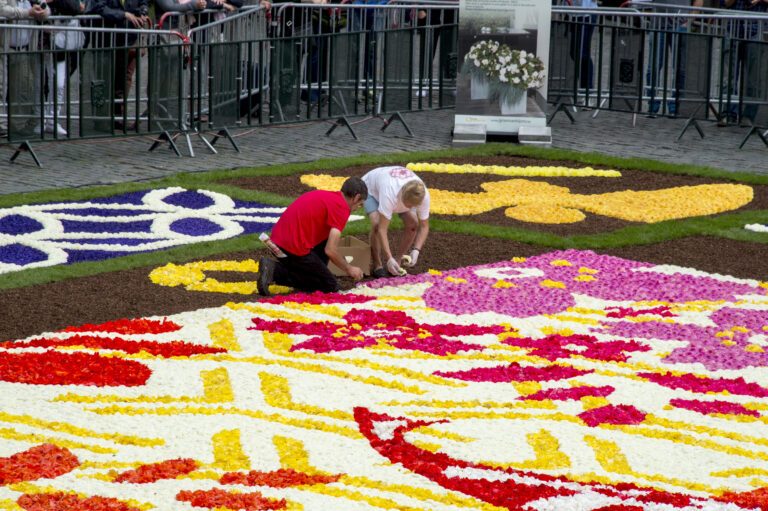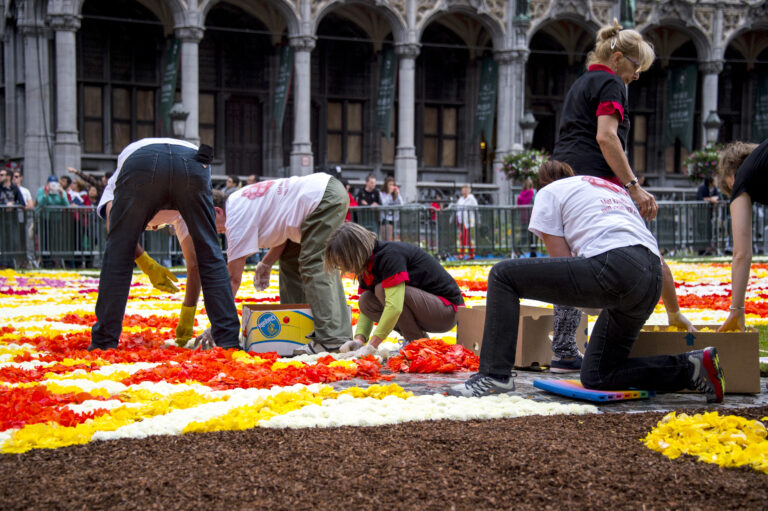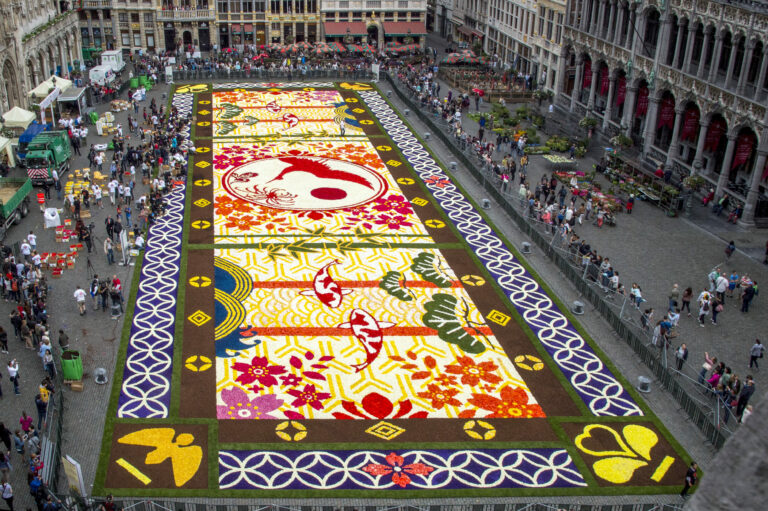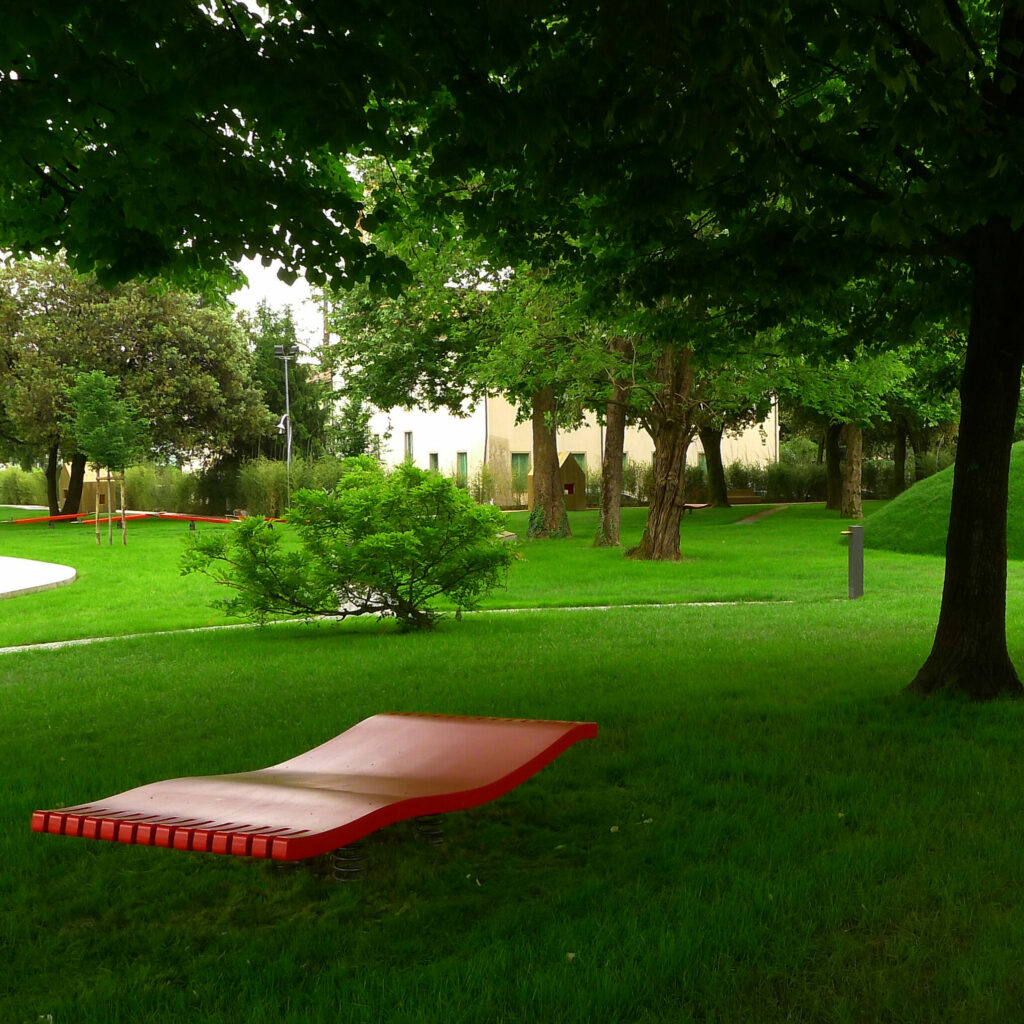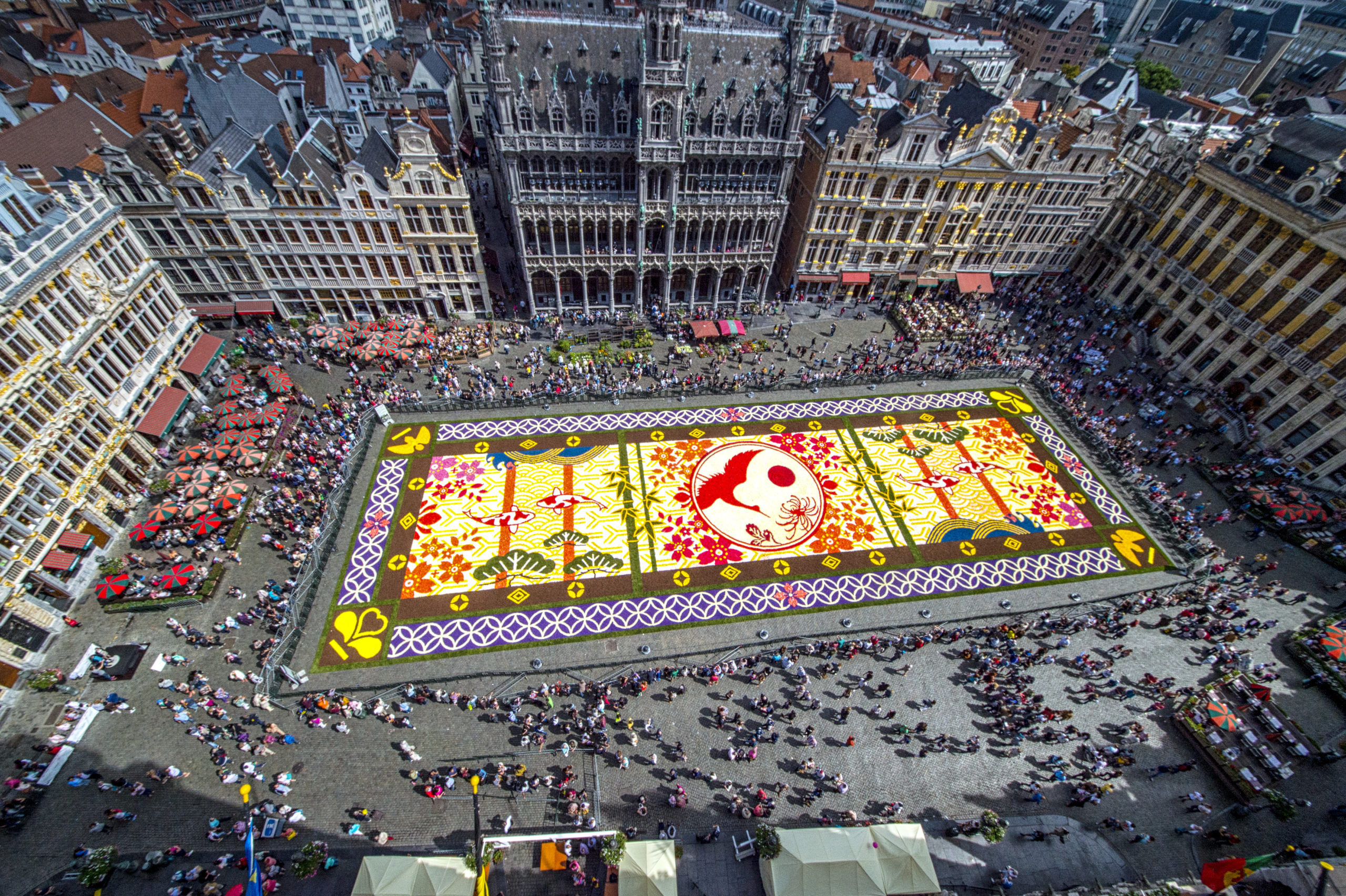
Belgium and Japan celebrate 150 years of friendship with the 2016 Flower Carpet in Brussels.
Billboard
Skyscrapper
Halfpage
The 20th Flower Carpet, set up in Brussels’ Grand Place, was adorned in a Japanese design to celebrate 150 years of Belgo-Japanese friendship. This ephemeral tapestry was made up of 1.800 square meters of begonias, drawing inspiration from Japanese representations of flowers, birds, the wind and the moon to depict the beauty of nature.
Ever two years in the first weeks of August Brussels offers a special attraction: the Flower Carpet made out of thousands of flowers. In 2016 the theme was the celebration of 150 years of friendship between Belgium and Japan.
On 1 August 1866, the two countries signed their first Treaty of Friendship, Commerce and Navigation. This event marked the birth of a long history between the two nations. Since then, Belgium and Japan have maintained amicable, rich and solid diplomatic and commercial relations.
A common heritage, shared values, prosperous trade, close relationships between the Japanese Imperial family and the Belgian royal family, and a mutual source of inspiration and cultural admiration are just some of the ties that have existed between these two nations for 150 years, and the reason why the Flower Carpet selection committee has chosen this theme as a means of paying homage to a wonderful friendship.
Flowers in Japanese culture
Enjoying a temperate climate, Japan has four very distinct seasons that allow an exceptionally varied flora to thrive. The seasons represent a central theme in Japanese culture, with flowers symbolising the changing of the seasons and the passage of time.
The fleeting, seasonal beauty of the flowers has long inspired admiration and contemplation among the Japanese, as evidenced by their countless artistic representations of flowers.
“Hanami” is a traditional Japanese custom that involves enjoying the beauty of flowers. It is particularly popular with the arrival of spring, when the Sakura (cherry trees) come into bloom. As for the “Hanakotoba”, it is the Japanese form of the language of flowers and is used to express one’s emotions without words.
A few figures
The flower carpet is 75 m long and 24 m wide – more than 1.800 square meters of begonias. It takes two years of work to get the Flower Carpet ready: the team has to reserve the hundreds of thousands of cut flowers it needs a very long time in advance. The Flower Carpet is a huge challenge both aesthetically and logistically. The weather conditions, the number of visitors, the route through the Town Hall, and the schedule all play a vital role in ensuring its success.
The flowers need to stay fresh and radiant for four whole days. So how is this done? Just before it is unveiled to the public, 100 volunteers create the carpet’s design on the ground in the Grand Place. They are guided by a life-size design laid out over the Grand Place’s cobblestones. The design is drawn on a micro-perforated plastic sheet that is fixed to the ground on top of a thin layer of sand.
This year the Flower Carpet will be composed of 600.000 begonias as well as dahlias, grasses, and strips of tinted bark which will come together to create a fleeting tapestry inspired by Japanese elegance.
The opening ceremony took place on 12 August 2016. A sound and light show, accompanied by the Italian opera “Madame Butterfly” by composer Giacomo Puccini, completely transformed the Grand Place.
Making of the Flower Carpet
Two years of patience and preparation is what it takes to conceive and create the four magical, colourful days of the Brussels Flower Carpet. If there’s one thing this thousand-year-old site has, it’s patience. The stones have all the time in the world.
The team behind the event has to choose the theme, design the project, and assess just how to grow the right number of begonias while taking into account the variety of colours. Around 600.000 flowers are required, sitting shoulder to shoulder in order to create the patterns, texture and nuances of a carpet unlike any other.
Medium Rectangle
Halfpage
Precise and delicate coordination
The begonia fields are located close together in a single region of Flanders. For several months, twenty-odd flower producers will plant and cultivate their begonias in order to obtain the exact colours and quantities needed to bring the Flower Carpet to life. When the time comes, these horticulturists pack and transport the flowers as quickly as possible so as to ensure that they last the length of the event.
A hundred volunteers in action
On the day itself, the life-size design is transferred onto a transparent, micro-perforated plastic sheet. It is then up to the 100 volunteers to perform an extremely delicate task: “colouring in” this giant image with the right shades of begonias and placing them as close as possible to one another. They will create a microclimate with a constant humidity in order to guarantee the freshness and variation in colour of these typical Belgian flowers.
All of this work is carried out in the few days leading up to the Flower Carpet event. This fleeting masterpiece is on show to the general public for four nights and four days each year. The first Flower Carpet event took place in the Grand Place in 1971.








